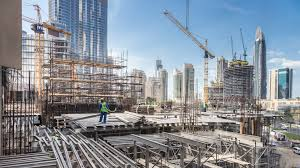The construction industry stands at the crossroads of one of the most transformative shifts in modern history—the global move toward electrification. From transportation and manufacturing to residential living, electricity is becoming the backbone of how societies function. As the world moves away from fossil fuels and toward clean energy systems, the question looms large: Is the construction industry truly ready to power this new era?
The Push Toward Electrification
Electrification is not a distant vision—it’s happening now. Governments and corporations worldwide are setting ambitious goals for decarbonization. Electric vehicles (EVs), solar-powered buildings, and energy storage systems are no longer experimental; they are rapidly becoming standard.
At the center of this movement lies infrastructure. Every EV charger, solar panel, smart grid, and microdata center depends on construction professionals who can integrate complex electrical systems seamlessly into design and build processes. Yet, the industry’s readiness remains uneven.
A Growing Demand for Electrified Infrastructure
Today’s infrastructure must support more than basic power distribution. It needs to handle:
✅ Smart building automation systems
✅ Renewable energy integration (solar, wind, geothermal)
✅ Electric vehicle charging stations
✅ Energy-efficient HVAC systems
✅ Advanced safety and monitoring systems
This means every new commercial tower, housing development, and manufacturing facility must be designed for an electrified world from the ground up. Retrofitting older structures to meet modern standards adds even greater urgency.
This evolving demand places significant pressure on construction teams to collaborate with specialized providers like electrical construction services—professionals who bridge the gap between architectural design and real-world power systems.
The Skills Gap: A Hidden Bottleneck
While innovation races ahead, skilled labor is lagging. Electrification requires not only traditional electricians but also engineers trained in digital systems, renewable integration, and automation technologies.
However, many construction firms face a shortage of qualified personnel capable of managing these complex systems. Training programs haven’t fully caught up, and the pipeline of new talent entering the field is insufficient to meet growing needs.
Without addressing this gap, the shift toward electrified construction risks bottlenecking progress, delaying projects, and inflating costs.
Technology and Integration Challenges
The push for electrification introduces new complexities to construction. Unlike traditional projects, which relied on straightforward wiring and mechanical systems, modern builds demand data-driven electrical designs that communicate with other systems in real time.
For example:
- EV charging infrastructure must be integrated into local grids without overloading them.
- Renewable systems require energy storage solutions to manage intermittent power supply.
- Smart building systems depend on sensors, software, and connectivity that require meticulous coordination during installation.
This level of system integration requires interdisciplinary collaboration across engineers, electricians, and IT specialists—something the construction industry has only recently begun to prioritize.
Sustainability Meets Resilience
One of the main drivers of electrification is environmental sustainability. Electrified systems drastically reduce greenhouse gas emissions compared to fossil fuel-based alternatives. Yet, sustainability alone isn’t enough—resilience must follow.
As urban centers grow increasingly reliant on electric systems, they also become more vulnerable to blackouts, cyber threats, and infrastructure failures. The challenge is to design electrical systems that not only save energy but can also withstand disruptions and adapt quickly during crises.
This calls for investment in microgrids, battery storage, and decentralized power systems—all of which require careful planning and installation expertise during the construction phase.
Policy and Regulation: The Double-Edged Sword
Governments are introducing incentives and mandates to accelerate electrification. While these policies encourage green construction, they also add regulatory complexity.
Builders now face strict compliance requirements around energy codes, efficiency standards, and renewable integration. Navigating this evolving regulatory landscape requires precise documentation, advanced planning, and technical literacy—skills that go far beyond traditional construction management.
Forward-thinking construction companies are partnering with electrical and environmental consultants early in the design phase to ensure compliance and avoid costly revisions later.
Collaboration Is the Key to Readiness
The electrification of construction isn’t a solo effort—it’s a collaborative one. Architects, engineers, electricians, and project managers must work together from day one to align design, functionality, and energy goals.
Early-stage coordination ensures that electrical layouts are optimized, costs are controlled, and systems are scalable for future upgrades. Projects that integrate electrical planning late in the process often face rework, inefficiency, and higher operational expenses.
The future will favor companies that treat electrical infrastructure not as a finishing detail but as the foundation of every project.
The Power Shift Has Already Begun
Electrification isn’t a passing trend—it’s a global transformation reshaping every corner of the construction industry. From sustainable design and energy resilience to smart infrastructure and skilled labor, the shift requires an entirely new mindset.
The question is no longer whether electrification is coming, but whether the construction world can keep up with its pace. Those who adapt—through innovation, collaboration, and skilled integration—will help build the blueprint for a more sustainable, electrified future.
Because in tomorrow’s world, power won’t just flow through wires—it will define the very way we build.






